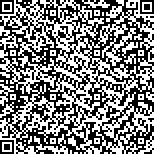中文摘要:拉屋矿床位于西藏当雄县境内,为大型矽卡岩型锌铜多金属矿床。文章在大量的野外地质调查、室内岩矿鉴定、扫描电镜与电镜能谱以及ICP-MS分析测试的基础上,对拉屋矿床的岩相学与矿相学特征进行了研究。矿区内的岩体为白云母二长花岗岩,具明显的爆碎结构。矽卡岩主要包括石榴子石矽卡岩、含透辉石石榴子石矽卡岩、透辉石石榴子石矽卡岩、透辉石矽卡岩。环带状石榴子石灰色部分的铝原子数为0.36~ 0.86,黑色部分的铝原子数为1.23~1.53;而钙原子数具有与铝原子数成反比的变化趋势。由石榴子石的环带推测,有13次岩浆与地层灰岩的物质交换过程。矽卡岩及其后蚀变岩的形成过程,控制着矿化的形成过程,出现石榴子石(晶体中呈粒状的透辉石→板状透辉石→长柱状透辉石)→次闪石-绿帘石→绿泥石+石英→碳酸盐+石英的蚀变变化趋势,与此相应,矿化有铋+钴镍→铋+铜铅锌→铜铅锌银→铟的变化趋势。金属矿物由黄铁矿、黄铜矿、磁黄铁矿、闪锌矿、方铅矿、辉银矿、自然铋、硫铜铁铋矿、硫铅铋银矿(?)、辉砷镍矿、黄黝锡矿、羟铟石等组成。作者指出,有用金属元素为锌、铜、铅、锡、铋、钴、铟,需对这些元素的资源特征进行评价,开采时需注意综合利用。
Abstract:Located in Dangxiong County of Tibet, the Lawu ore deposit is a large-size skarn zinc-copper polymetallic deposit. According to detailed field geological survey, indoor petrologic and mineralogical determination, SEM and EDS analysis, and ICP-MS spectral analysis, the authors studied facieology and mineragraphy characteristics of the Lawu zinc-copper polymetallic deposit. The main rock body of the ore deposit is muscovite monzonitic granite, with a clear decrepitation structure. The main skarn types are garnet skarn, diopside-bearing garnet skarn, garnet-diopside skarn and diopside skarn. The number of aluminum atoms is 0.36~0.86 in the gray part of zonal garnet and is 1.23~1.53 in the black part; nevertheless, the number of calcium atoms shows the opposite trend. The garnet ring implies that there have been 13 material exchange processes between magma and limestone strata. Skarn and the formation of the subsequent altered rock controlled mineralization. There appears granular changing trend of diopside-elongated diopside→sub-amphibole-epidote→chlorite+quartz→carbonate+quartz in the garnet crystal. Accordingly, the mineralization shows the order of bismuth + cobalt-nickel→bismuth + copper-lead-zinc→copper-lead-zinc-silver→indium mineralization. Metallic minerals include pyrite, chalcopyrite, pyrrhotite, sphalerite, galena, argentite, natural bismuth, sulfur-copper-iron-bismuth ore, sulfur-lead-bismuth-silver ore (?), gersdorffite, stannite, dzhalindite etc. Useful metals are zinc, copper, lead, tin, bismuth, cobalt and indium, whose resource characteristics need to be evaluated. When mining is carried out, the comprehensive utilization should be taken into account.
keywords:geology, zinc-copper polymetallic deposit, garnet zoning, skarn, facieology and mineragraphy Lawu
文章编号:
中图分类号:
文献标志码:
基金项目:由国家科技支撑课题《西藏班公湖岛弧带铜、金、富铁矿评价与综合找矿技术方法示范研究》(编号: 2006BAB01A05)之专题《区域成矿模型与典型矿床成因模型研究》与中国地质调查局青藏专项《西藏班公湖-怒江成矿带找矿远景区评价》(编号: 1212010818097)共同资助
引用文本:
刘妍,赵元艺,王瑞江,崔玉斌,宋亮,杨长青.2010.西藏拉屋锌铜多金属矿床岩矿相学特征及意义[J].矿床地质,29(6):1054~1078刘妍,赵元艺,王瑞江,崔玉斌,宋亮,杨长青.2010.Facieology and mineragraphy characteristics of Lawu zinc-copper polymetallic ore deposit in Tibet and their significance[J].Mineral Deposits29(6):1054~1078
图/表

